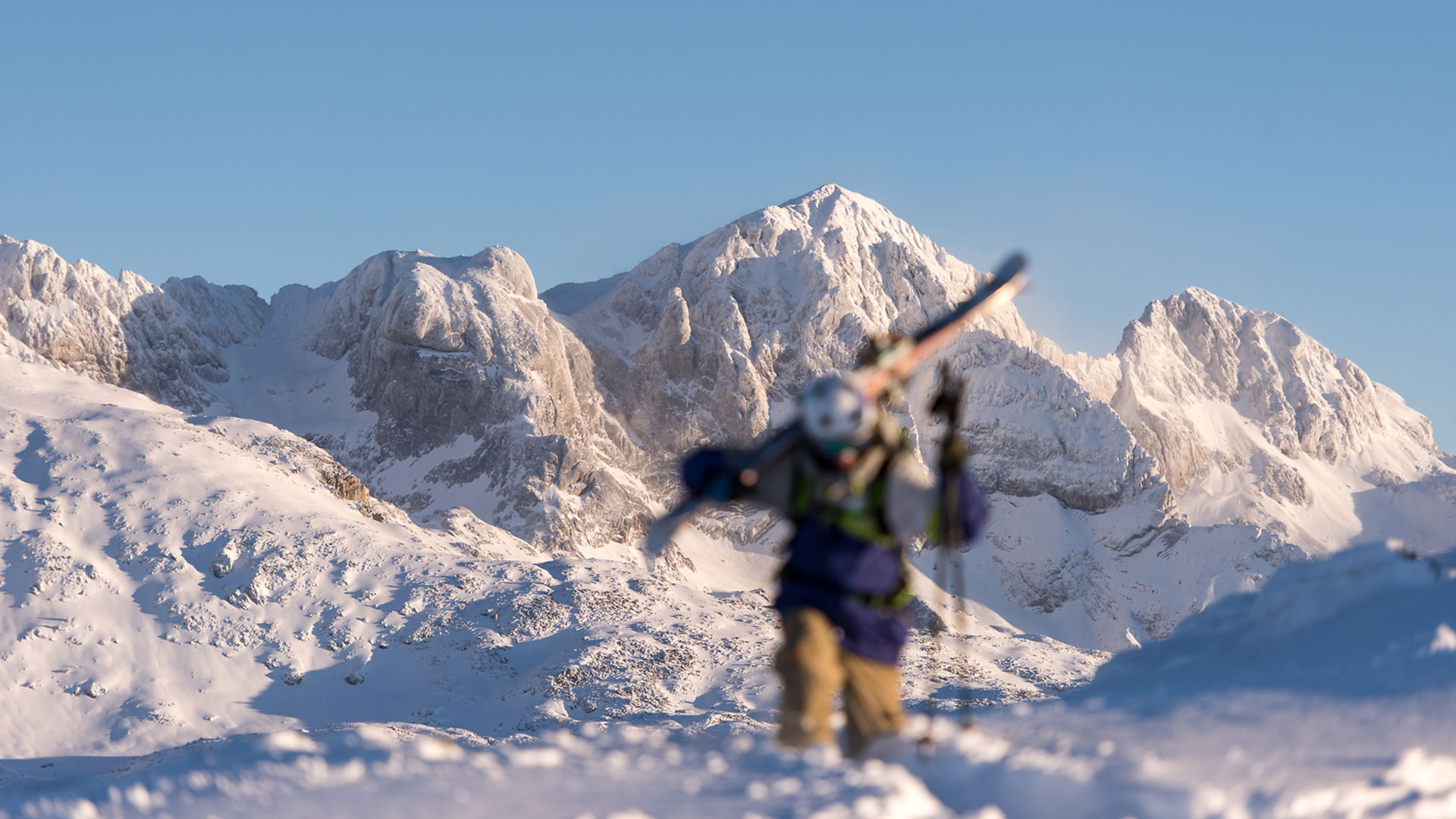The beautiful white blanket has finally descended over the peaks and valleys of the Julian Alps, bathing them in a winter idyll. And because the Julian Alps are such a wide and varied area, you can go from completely snow-covered valleys to, say, Brda, where there is virtually no snow, in a very short time, so that even in the middle of the worst of winter you can enjoy cycling or walking with wonderful views of the colour contrasts. These contrasts are also reflected in the activities you can enjoy.
Of course, the number one winter sport is alpine skiing and the Julian Alps have some excellent ski resorts. The Vogel is the most famous, of course, but don’t miss the ski resorts of Kranjska Gora, Soriška planina, Zatrnik, Kozji hrbet and Pokljuka. If you like to look uphill on your skis and not just downhill, you also like cross-country skiing and touring. Soriška Planina, Pokljuka, Bohinj and Kranjska Gora boast the biggest cross-country skiing areas, but when the snow falls, local enthusiasts also make cross-country ski trails in Radovljica, Žirovnica and the Soča Valley.
In winter, you can also take advantage of the regular winter shuttle bus.




